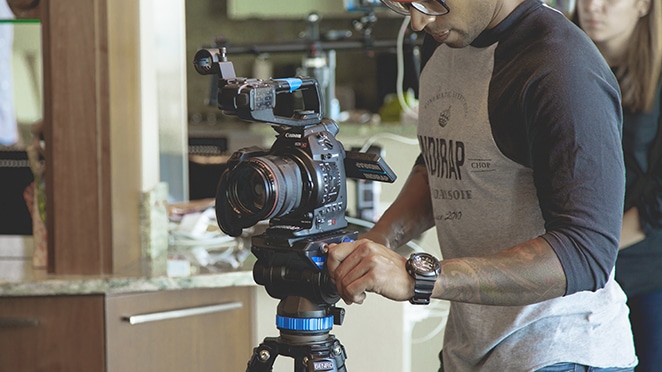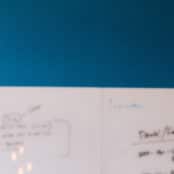
It doesn’t matter if you’re a seasoned industry vet or a newcomer to the field, estimating projects isn’t an easy task. In fact it’s one most creatives dread doing. If you’re like me, you’d prefer to just let your creativity flow instead.
The thing is, designing and building experiences requires prudent planning when it comes to determining costs and the delivery. Items like timeframe and overall project cost should be nailed down at the onset of the project in order for it to be considered a success for both the client and the agency or freelancer.
Good estimates can mean the difference between a profitable project with a good experience and one that is simply an overpriced, hair pulling failure.

Then there is the obstacle of getting the client to understand your estimates. A small project can turn into an expensive, confusing, and time-consuming task if no thought and care is put into things like project management, information architecture, user experience, and content development.
So, what’s the secret to doing it the right way?
Ask, ask, and ask some more
The very first thing you need to do when starting any project is to get to know and understand your client’s expectations and to ensure everyone is on the same page.
If possible, meet with your client face-to-face or set up a meeting via an online conferencing tool like Skype to understand exactly what your client needs and what they are looking for. Understand that your client is presenting a vision to you and is relying on your expertise to make it a tangible reality.

Don’t be afraid to ask the tough questions. “Sometimes clients need a nudge in the right direction before they open up to you. ”
Your client may not understand everything that goes into a creative project, or what information needs to be provided for more accurate project budget and timeline estimates, so don’t be afraid to ask, otherwise it can end up costing you later.
Assumed knowledge is a dangerous bridge to walk across.
A few good questions to start with include:
What does your business/product/service actually do? Getting a thorough understanding of who your client is, what they do, how long they’ve been around, etc, will go a long way with the research and decisions you make throughout the entire client relationship, as well as during the course of the project.
Even the slightest misunderstanding can negatively impact your project before you even get a chance to start!
What are your business goals? Pay attention to what your client shares here. Keep in mind that this information should be confidential between you and your client. Trust is an important part to creating accurate estimates.
Take down as many notes as possible about what they hope this project will achieve. This is where expectations begin to become visible.

What makes your company/product/service different than competitors? The marketplace is all about positioning. Where and how a company, product, or service is positioned can be the big difference between success and failure. So you need to know what makes them different so you can communicate that in your design.
On the chance that your client really doesn’t have anything that makes them stand out, maybe now is the time they should start trying to create an advantage over their competitors.
What type of site are you looking for? This question is a gateway of sorts to your client’s creative side. It’s easier for them to show what excites them, but do remember that not everything a client may like suits their needs or will help them accomplish the goal they have in mind.
Different website types will result in different timeframes and incur different costs. For instance, a landing/sales page could be completed relatively quickly in comparison to a huge platform-type site that may need a couple of months from start to finish.
Additionally, a corporate website design or an eCommerce store require different approaches and resources during the development process.
Your client may be looking for a beach house with an infinity pool while you’re thinking they want a condo with a hot tub. It’s your job to flush out the details of what they actually need to accomplish their goals and help them make the right decisions.
Do you need help with content or will you be providing this? Chances are, your clients will provide the content, and while this is fine, it can present a problem later on. Be sure to make sure that the client understands the risk of trying to do this on their own, especially on a large project.
Also keep in mind items like images, audio, and video that your client may be interested in utilizing throughout the completed project. If your client isn’t providing content, there may be an additional cost to you for the purchase of these items if there isn’t a clear understanding of who will be responsible for what.

Embrace time tracking
When you’re starting any new task, estimating how long things are going to take and basing a quote on that is incredibly difficult because you don’t have any prior experience to reference. Any job requires estimates of time and resources needed, and if you’re not keeping track, it’s harder to do things accurately.
Understand that not all time tracked is equal. Some of the time tracked will fall under billable hours while the rest will fall under non-billable hours.
Tasks like proposal writing, invoicing, and other admin related items would be considered non-billable, while tasks like emails, phone calls, meetings, site design, and development are considered items that would be billable.
Time tracking allows your client to be billed more accurately because there’s less second guessing at how long something will potentially take.
Apply a margin of error
Part of being human is making mistakes, and the only way mistakes don’t ruin your health or your project is by acknowledging and planning how to get around them.
Each project brings along its own share of unexpected situations. New technology might require more time to implement within the project, maybe the client delays an important meeting, additional changes may need to be implemented, and you or a team member can end up sick.

In order to protect yourself from these sort of scenarios, it’s better to overestimate on a project when it comes to the timeline and allow for a margin of error. If the project is finished faster, then you’ll exceed the client’s expectations, if you do face difficulties and were prepared, then chances are you still deliver on time and meet the client’s expectations.
Takeaways
The key to a successful project is to gather as much information as you possibly can within the early stages and only after that information has been processed and understood, should one commit to a price.
Each project should be perceived as a relationship between you and your client and the key to a good relationship is communication and understanding. Assumptions will lead you down very stressful and often avoidable roads, so be sure to spend a little extra time at the start or else you may end up spending a ton of time later, time that could be spent creating something else.







Comments ( 4 )
binance
May 17, 2025
Your point of view caught my eye and was very interesting. Thanks. I have a question for you.
ücretsiz binance hesabi
March 11, 2025
Your article helped me a lot, is there any more related content? Thanks!
UI UNICORN
August 21, 2017
I got into web design about 2 years ago and now I can make sites like this: https://ui-unicorn.co.uk
I haven't looked back!
Andrew McClellan
January 12, 2017
I'd like to further highlight the importance of asking LOTS of questions, and not being afraid to ask in different ways (as you may get different answers depending on your methods).
For example, one of the toughest obstacles in working with clients in the "discovery" phase is determining the web design style they are drawn to, and would expect to be used on their project. I used to just ask the straightforward question, however, that usually led to vague and imprecise descriptions than didn't do much with regard to accurately communicating their preferences.
Over time, I realized that the answers I receive will only be as specific as the questions I pose, so I began tweaking my strategy. I started asking them to use adjectives to describe their business, as well as the style of website they like (such as bold, modern, minimal, fun, retro, dark, etc.). I also asked them to provide me with links to other websites that have an aesthetic similar to what they are looking for. Pictures are worth as many words to designers as they are to users, so why not?
So yes, don't be afraid to ask, ask, ask! More information never hurts (usually), and approaching the tough to communicate subjects from many angles will dramatically increase your chances for success.
Jeremy
January 19, 2017
Totally agree (in addition to the good article). I always ask for example sites that the potential client is drawn to. When it comes to style, I can often broach the topic by starting with a supposedly simple choice: Do you want to present yourself in a "classic" style or a "modern" style? Both are valid, and both generally indicate a tendency that can be drilled down into typefaces, look-and-feel, etc.